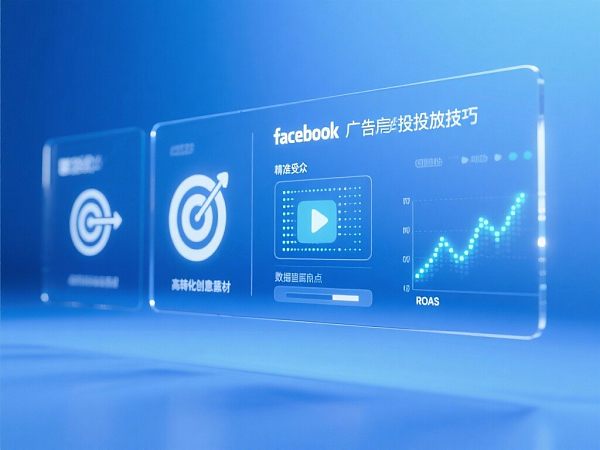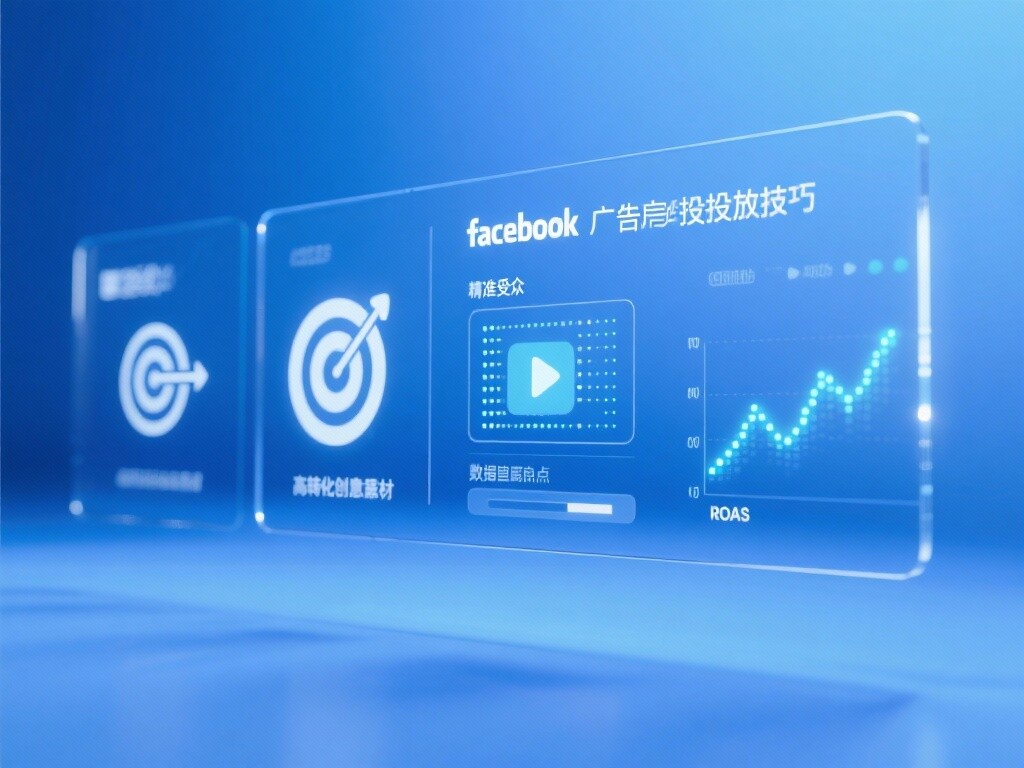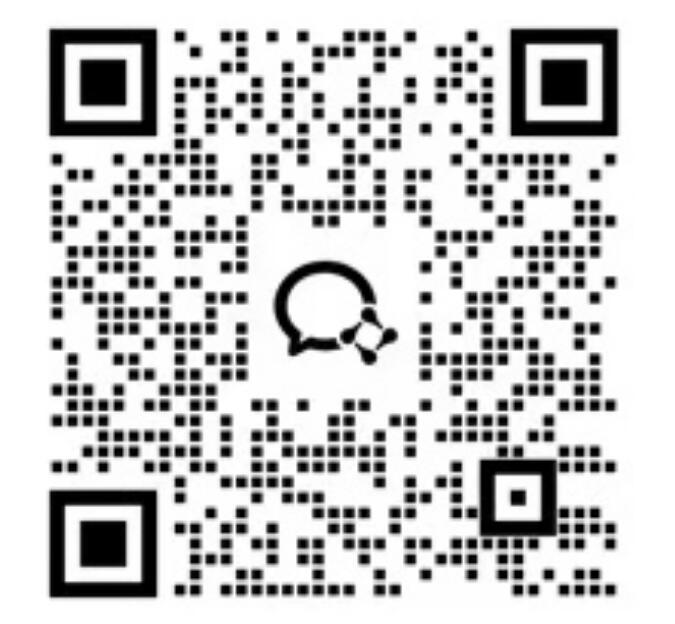Easy Camp Cloud Intelligent Website Construction and Marketing System Platform!
Definition and core objectives of Facebook advertising
Facebook Ads Placement refers to the use of the advertising platform provided by Meta (Facebook, Instagram, Messenger, and Audience Network) to display paid images, videos, or interactive ads to specific audiences through a bidding mechanism to achieve business goals such as brand exposure, lead generation, or product sales .
Core features of Facebook's advertising system:
Interest/behavior driven: Unlike Google search ads which are based on users’ active search intent , Facebook ads are passively pushed based on users’ interests, behaviors, demographic data, and social interactions .
Visual and emotional impact: The platform relies heavily on creative materials (images and videos) to attract users' attention in the information flow.
Full-funnel coverage: Ad objectives can cover the entire marketing funnel from awareness, consideration, and conversion.
The essence of Facebook advertising skills: Focus on users and achieve efficient conversions in social scenarios through refined operations of audiences, creativity, and algorithms.
The evolution of Facebook advertising: From simple banners to AI-driven personalized recommendations
The history of Facebook advertising is the evolution of social media marketing from broad-based advertising to hyper-personalization , and from manual operations to automated optimization .
1. Early Stage: Banner Ads and Simple Targeting (2007-2012)
Ad format: Primarily sidebar banner ads , with simple targeting based on user **basic demographic data (age, gender, region).
Limitations: Lack of data tracking and in-depth conversion tracking capabilities, resulting in generally low ROAS.
2. Power Editor and Precise Interest Targeting (2012-2016):
Milestone: Launch of Power Editor (later evolved into Ads Manager), which allows advertisers to deeply segment and target users based on subtle behaviors such as social interests, page likes, and app usage .
Technological breakthrough: The launch of Custom Audiences and Lookalike Audiences marked the arrival of the era of precision marketing.
3. Pixels and machine learning dominate (2016-2020):
Core Technology: The Facebook Pixel has become the cornerstone of conversion tracking. By transmitting data back through the pixel, the platform's machine learning models begin to guide ad optimization and delivery .
Advertising goals: Campaign objectives shift from chasing clicks to chasing the lowest cost per acquisition (CPA) or the highest ROAS .
4. Privacy tightening, automation and creativity first (2020 to present):
Challenge: Adjustments to Apple’s iOS 14.5 privacy policy have made data tracking more difficult.
Technical response: Facebook is accelerating the promotion of automated solutions (such as Advantage+ shopping ads and simplified audiences ), emphasizing that advertisers should focus on high-conversion creative materials .
Trend: Creativity becomes the primary factor in determining ROAS, and algorithms are responsible for finding the most suitable audience.
The technical principles of Facebook advertising: bidding, algorithms, and pixel returns
The efficient operation of Facebook's advertising system depends on its underlying auction system, machine learning algorithm and data feedback mechanism .

1. The Ad Auction
How it works: Each ad impression is awarded through a generalized second-price auction, but the winner isn't just the highest bidder.
Core formula (total value):
Estimated Action Rate: Facebook's algorithm predicts the likelihood that a user will take a targeted action (such as a click or purchase) after seeing an ad. This is the core function of machine learning .
Technical revelation: High-quality, highly relevant, high-click-through rate (high estimated action rate) ads can win the auction with a lower bid , which is the essence of Facebook advertising skills.
2. Facebook Pixel and Data Feedback
How it works: The Facebook Pixel is a JavaScript code installed on your website. It tracks all key user actions on the site (browsing products, adding items to cart, completing purchases) and transmits this data back to the Facebook advertising system in real time .
Purpose: Pixel data is the only "food" Facebook's algorithms use to learn and optimize . Without pixels, the algorithm can't know which users are high-value, and thus can't deliver targeted ads.
Technology upgrade: In response to iOS privacy restrictions, we launched the Conversion API (CAPI) , which sends data directly from the server to improve tracking accuracy and reliability .
3. Lookalike Audiences Algorithm Logic
How it works: Based on a seed audience (such as existing high-value customers or website purchasers), the Facebook algorithm uses feature extraction and similarity analysis to find new users with similar interests and behavior patterns across the entire social network.
Application: This is the most effective way to scale high-converting audiences and is often more precise than manual targeting.
The core features of Facebook advertising techniques and the advantages of high ROAS
Professional Facebook advertising strategies can transform the social platform into a stable source of revenue.
1. Super precise audience segmentation capabilities
Features: Ability to leverage **Custom Audiences (purchased customers, app users) and Similar Audiences (LAL)** to replicate and scale high-value users.
Advantages: Segmentation based on tens of thousands of dimensions such as interests, behaviors, occupations, and education ensures that advertising budgets are spent only on potential customers who are most likely to purchase .
2. Powerful visual drive and brand storytelling
Features: Ad formats are rich and diverse, including pictures, carousels, videos, and stories , and are particularly suitable for conveying brand value through eye-catching visual content and emotional connections .
Advantages: Suitable for D2C e-commerce and consumer products , it can quickly capture user attention in the information flow through creative materials and build brand awareness.
3. Automation and scalability
Features: Tools such as Advantage+ Shopping Ads , Dynamic Creative Optimization (DCO) , and Smart Bidding let AI handle complex optimization.
Advantages: Operators only need to provide high-quality creatives and set clear conversion goals , and AI can find the best delivery time and audience across all meta channels to achieve large-scale growth.
4. Comprehensive retargeting mechanism
Features: Able to accurately target users who have visited websites, watched videos, and added products to shopping carts .
Advantages: Retargeting audiences are at the bottom of the conversion funnel , with extremely high conversion rates. Professional targeting techniques can continuously reach and alleviate their purchasing concerns through sequential advertising .
In-depth application and practical strategies of Facebook advertising techniques
Professional Facebook advertising must focus on the coordination of three key elements: audience, creativity and data .
1. Audience Segmentation and Testing Strategy
Cold start audience (new customers): Focus on a 1%-3% lookalike audience (LAL) and use broad targeting to give the AI room to explore. Avoid over-segmentation (too many levels of interest audiences).
Warm Start Audience (Returning Customers): Create multiple custom remarketing audiences (e.g., visitors in the past 30 days, added to cart in the past 90 days, purchasers in the past 180 days). Target audiences at different stages with customized offers and creatives .
2. Tips for Creating High-Conversion Creatives
Eye-catching first three seconds: Video ads must lock users' attention in the first three seconds , usually by showing questions, pain points or strong visual impact .
Native feel and UGC: Create materials that don’t “look like ads” and often use UGC (user-generated content) or influencer reviews to increase user trust and click-through rate.
A/B testing: Continuously test creative assets, copy, and CTA buttons to ensure you have the best performing creative combination for different audiences .
3. Bidding and budget management skills
Initial learning: In the early stages of your campaign, make sure your budget is high enough to allow the algorithm to get at least 50 conversion events in 7 days to go through its “learning period.”
Smart Bidding: In most cases, use Target ROAS or Lowest Cost Smart Bidding, and provide sufficient buffer time for the algorithm to optimize.
CBO (Campaign Budget Optimization): Use CBO to let the algorithm automatically allocate budget to the best-performing ad groups .
4. Data tracking and attribution techniques
CAPI deployment: Prioritize the deployment of the Conversion API (CAPI) to address iOS tracking restrictions and ensure the integrity and accuracy of data returned.
Attribution windows: Be familiar with and understand the concept of attribution windows such as 7-day clicks/1-day views , which directly affects your evaluation of ad performance.
Yiyingbao: Your Facebook advertising and ROAS optimization expert
The Facebook advertising service provided by EasyChannel is a systematic solution based on deep insights from Meta algorithms, CAPI deployment, and high-conversion creative models . We are committed to converting your social media budget into sustainable, predictable, and high ROAS revenue .
CAPI/Pixel in-depth deployment and diagnosis: Ensure the correct deployment of the Conversion API , maximize the accuracy of data feedback, and provide high-quality data for AI learning.
Audience Lookalike Audiences (LAL) seed mining and testing: Build multi-dimensional, high-value similar audiences based on your CRM data, and develop scientific audience segmentation and testing strategies .
High-conversion creative model guidance: Based on the native content characteristics of Facebook and Instagram, we guide you to create ad creatives that meet the platform's aesthetics and have high completion rates and click-through rates .
Smart Bidding and Budget Automation: Deploy Advantage+ and Target ROAS smart bidding strategies, and use CBO for budget optimization to achieve scalable growth.
Full-funnel remarketing sequence design: Design remarketing ad sequences targeting customers at different stages to increase conversion rates and LTV of existing customers.
Choose Yiyingbao to let your Facebook advertising surpass your peers and become the core force driving your brand awareness, high conversion and revenue growth .
FAQ
1. Why does my Facebook ad campaign always have a long "learning phase" or even fail to exit it?
A prolonged learning phase usually occurs because the algorithm doesn't obtain sufficient conversion data for learning.
Insufficient data: The algorithm needs to acquire at least 50 target conversion events (e.g., purchases, add-to-cart) within 7 days. If your budget is too low or your audience is overly segmented, it may lead to insufficient data.
Solution: Increase the budget to help the algorithm quickly gather data. If purchase conversions are too difficult, consider first optimizing **"add to cart" or "view key content" and other upper-funnel conversion events**.
2. Why is "Lookalike Audience (LAL)" more effective than manual interest targeting?
Because Lookalike Audiences are based on your highest-quality data, and the algorithm can explore a broader space.
Data quality: LAL builds models using real data from your existing high-value customers (e.g., past purchasers), ensuring high similarity.
Algorithm exploration: LAL allows Facebook's AI to search new and unknown similar users within the massive social graph, proving more efficient and scalable compared to manual targeting based on limited **"interest tags"**.
3. After iOS 14.5’s privacy policy changes, how can I ensure the accuracy of conversion tracking data?
The core solution is deploying the Conversions API (CAPI) to replace browser-side tracking.
Advantages of CAPI: CAPI enables your server to directly send conversion events to Facebook, bypassing browser-side privacy restrictions (e.g., App Tracking Transparency).
Implementation: While CAPI deployment is relatively complex and requires technical integration, it is essential for ensuring accurate high-quality data reporting and maintaining the precision of smart bidding models.
4. How to optimize Facebook ads for "Ad Quality and Relevance Score"?
Focus on improving CTR (click-through rate) and landing page experience.
Increase CTR: Ad creatives must be eye-catching (a highly impactful first 3 seconds, native feel), while ad copy should offer strong value propositions and clear CTAs.
Landing page experience: Ensure the landing page loads quickly (Core Web Vitals), displays content highly consistent with the ad copy, and provides a seamless conversion path.

Customer Reviews
Mr. Qi, CEO of a D2C fashion e-commerce platform
"Our Facebook ad budget is high, but ROAS had stalled. Easypurer’s experts first helped us deploy CAPI in depth, solving inaccurate data feedback issues. Then they guided us through A/B testing high-converting creative models and building an LAL seed audience based on purchasers. Within just four months, our Return On Ad Spend (ROAS) stably climbed from 2.5 to over 4.0, while high-value customer conversion volume hit record highs. Their understanding of Meta’s algorithm is truly profound!"
Ms. Wang, Marketing Director of an EdTech SaaS platform
"For our non-physical products, lead quality is critical. Easypurer advised us to abandon broad interest targeting and instead construct an LAL audience from high-intent website content visitors. Simultaneously, their designed remarketing ad sequences (for different trial stages) proved highly effective. Now, our CPL via Facebook has dropped by 25%, and the paid conversion rate clearly outperforms other social channels. They’ve genuinely transformed our Facebook ads into a high-quality lead generation engine."




